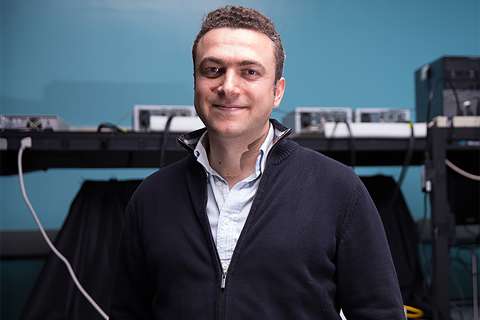Breast cancer stem cells, thought to be the sole source of tumor recurrence, are known to be resistant to radiation therapy and don't respond well to chemotherapy.
Now, researchers with the UCLA Department of Radiation Oncology at UCLA's Jonsson Comprehensive Cancer Center report for the first time that radiation treatment, despite killing half of all tumor cells during every treatment, transforms other cancer cells into treatment-resistant breast cancer stem cells.
The generating of these breast cancer stem cells counteracts the otherwise highly efficient radiation treatment. If scientists can uncover the mechanisms and prevent this transformation from occurring, radiation treatment for breast cancer could become even more effective, said study senior author Dr. Frank Pajonk, an associate professor of radiation oncology and Jonsson Cancer Center researcher.
"We found that these induced breast cancer stem cells (iBCSC) were generated by radiation-induced activation of the same cellular pathways used to reprogram normal cells into induced pluripotent stem cells (iPS) in regenerative medicine," said Pajonk, who also is a scientist with the Eli and Edythe Broad Center of Regenerative Medicine at UCLA. "It was remarkable that these breast cancers used the same reprogramming pathways to fight back against the radiation treatment."
The study was published Feb. 13 in the early online edition of the peer-reviewed journal Stem Cells.
"Controlling the radiation resistance of breast cancer stem cells and the generation of new iBCSC during radiation treatment may ultimately improve curability and may allow for de-escalation of the total radiation doses currently given to breast cancer patients, thereby reducing acute and long-term adverse effects," the study states.
Very few breast cancer stem cells are found among the larger pool of breast cancer cells. In this study, Pajonk and his team eliminated the smaller pool of breast cancer stem cells and then irradiated the remaining breast cancer cells and placed them into mice.
Using a unique imaging system, Pajonk and his team developed to visualize cancer stem cells, the researchers were able to observe the initial generation into iBCSC in response to the radiation treatment. The newly generated iBCSC were remarkably similar to breast cancer stem cells found in tumors that had not been irradiated, Pajonk said.
The team also found that the iBCSC had a more than 30-fold increased ability to form tumors, compared with the non-irradiated breast cancer cells from which they originated.
Pajonk said that the study unites the competing models of clonal evolution and the hierarchical organization of breast cancers, as it suggests that undisturbed, growing tumors maintain a small number of cancer stem cells. However, if challenged by various stressors that threaten their numbers, including ionizing radiation, the breast cancer cells generate iBCSC that may, together with the surviving cancer stem cells, repopulate the tumor.
"What is really exciting about this study is that it gives us a much more complex understanding of the interaction of radiation with cancer cells that goes far beyond DNA damage and cell killing," Pajonk said. "The study may carry enormous potential to make radiation even better."
Pajonk stressed that breast cancer patients should not be alarmed by the study findings and should continue to undergo radiation if recommended by their oncologists.
"Radiation is an extremely powerful tool in the fight against breast cancer," he said. "If we can uncover the mechanism driving this transformation, we may be able to stop it and make the therapy even more powerful."
The study was funded by the National Cancer Institute, the California Breast Cancer Research Program and the U.S. Department of Defense.




